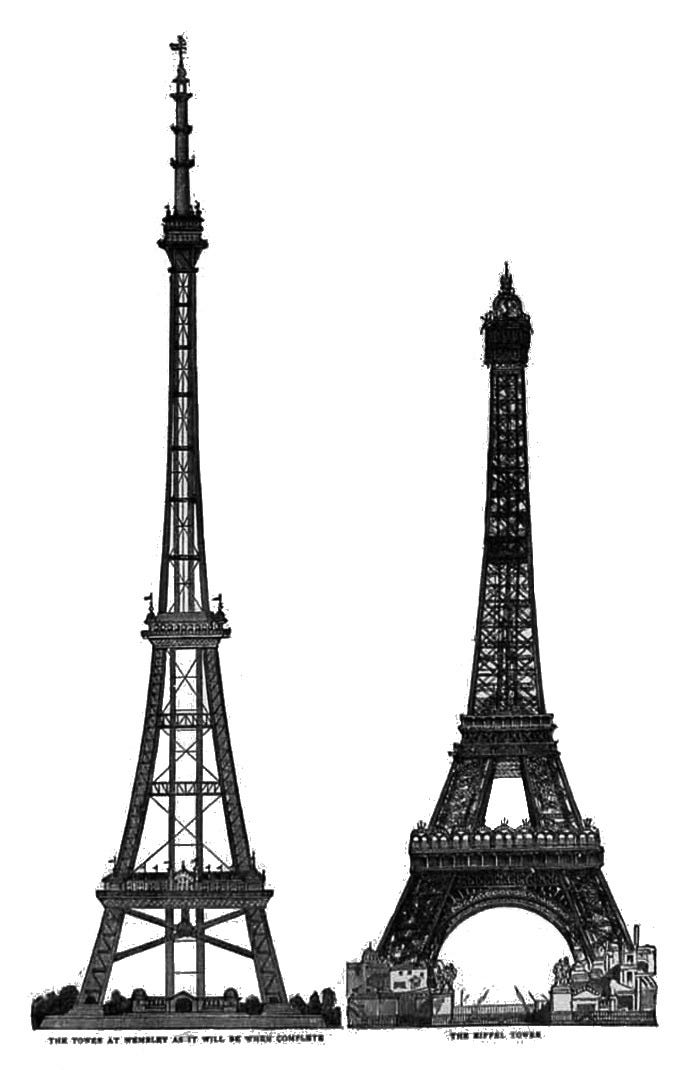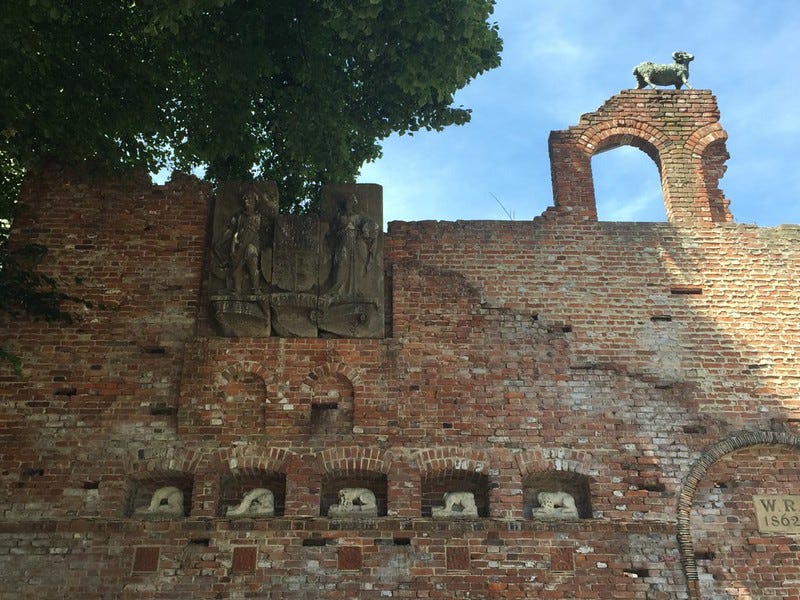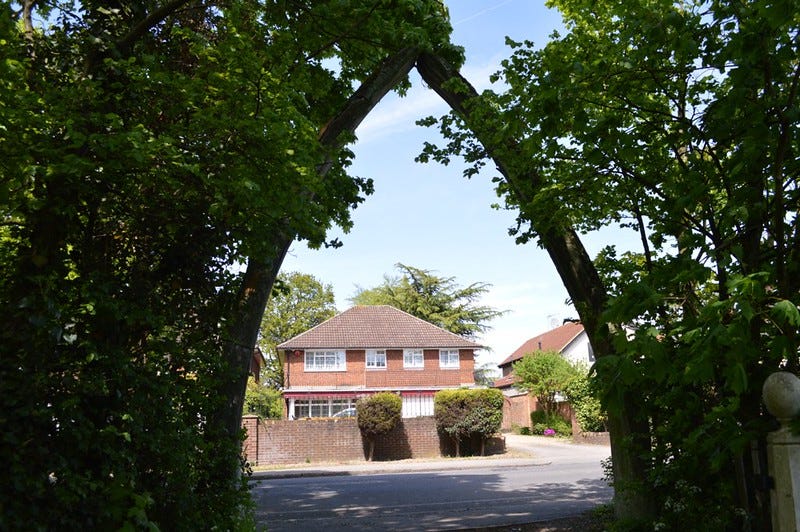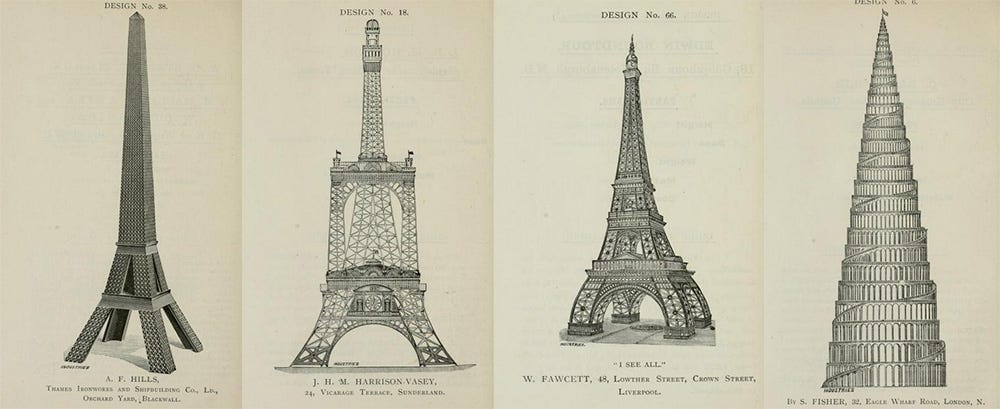An Historical Unusualness For Every London Borough (Part 1)
London has 32 boroughs, all of them layered in history.
Welcome to Londonist: Time Machine’s Friday edition for paying subscribers, with a comely teaser for everyone else.
This month, April 2025, marks 60 years since the formation of Greater London and its 32 boroughs. I couldn’t let the occasion go unmarked (not least because I have a book out soon on the subject). So, I’ve rummaged through my rumpled hippocampus for some nuggets of historic trivia, one for every borough, presented below in alphabetical order.
No History Radar this week (or next), as I’m still having fun with the kids on school holidays.
An Historical Unusualness for Every London Borough, Part 1
Barking and Dagenham
This curious ruin stands in the middle of Barking town centre. Is it part of the medieval abbey? The remains of an old brewery? Nope, and nope again. The brickish enigma is less than 20 years old. The structure — which looks like an AI approximation of an ancient ruin — was built in the Noughties as the centrepiece for a redeveloped square. Local bricklaying trainees laid the courses, while the motley accoutrements, such as the ‘W.R. 1862’ inscription, come from a salvage yard. It’s a Barking-mad folly, then, but I rather like the randomness of it all.
Barnet
The village of Arkley, just west of High Barnet, is home not only to one of London’s few surviving windmills, but also to an arch made of whalebones. The massive orca jaws were installed in 1939, as replacements for a set of cetacean mandibles that had stood there since the 1860s. The arch once marked the entrance to a big, posh house, known as Whalebones. Today, it superintends a bank of parking bays used by drivers who can’t face Barnet Hospital’s bunfight of a car park. I find it amusing that one of the highest points in north London is crowned with the jaws of a creature of the deep.
Bexley
“Where is London’s longest public pier?” Next time that pressing question comes up in conversation, you will now be able to respond with confidence. It is over in Erith, Bexley. The 360 metre pier was built in the 1960s to provide a safe berth for ships in the deep water channel at the centre of the Thames (the channel is clearly visible in the satellite view above). After London’s maritime industry declined, the pier lay derelict for many years, but was brought back to life as a public amenity in the late 1990s. You can walk along it to the end, gaze across the water, and contemplate the Rainham landfill heaps and the Momentum Logistics Park in all their majesty.
This is, in fact, a replacement for an even longer wooden pier, which stood here from 1864. That was built as a disembarkation point for giddy tourists down from London to visit the local hotel and pleasure gardens. These became slightly less of an attraction when Crossness sewage pumping station opened nearby. It’s hard to get much pleasure from a garden when thousands of gallons of raw sewage are discharging upstream of your sun lounger. Happily, that kind of thing never happens today. </sarcasm>
Brent
Brent is home to Wembley Stadium. It is the world’s most famous footballing venue. It is also home to my favourite Anglo-Saxon fact… that the whole area was named after a local landowner called Wemba about whom we know nothing, and that anyone who chants the famous refrain “Wemba-lee, Wemba-lee, Wemba-lee” is unconsciously channelling his name.
But I’ve used that fact too many times in the past, so I won’t mention it here.
Instead, behold a quartet of Victorian towers that might have been built on the site where the stadium now lies:
Each is a failed entrant in a competition to design a tower a bit like Monsieur Eiffel’s, but taller. The competition was instigated by Sir Edward Watkin, who wanted a big talking point for his leisure park at Wembley. People would reach it by the Metropolitan Railway, which he controlled; and perhaps travel there through the Channel Tunnel from Paris — another doomed scheme that he initiated.
Any of the design concepts (and this is just a selection) would have challenged Victorian engineers to their limits. The first option shown above, a kind of unholy hybridisation of the Eiffel Tower and the Washington Monument, would have stood 612 metres tall. That would have made it almost twice the height of the modern-day Shard, but a century before. I also like the third design above, which is basically the Eiffel Tower a decade after its gym membership has lapsed.

In the event, a more modest design reaching only 358 metres was chosen. It was partially built, too. In 1894, the structure had made it up to its premier étage, 47 metres above the Wembley turf. Sadly, the money ran out at that point. The unfulfilled tower, dubbed ‘Watkin’s Folly’ was demolished in 1907, and the famous stadium was built on its site.








